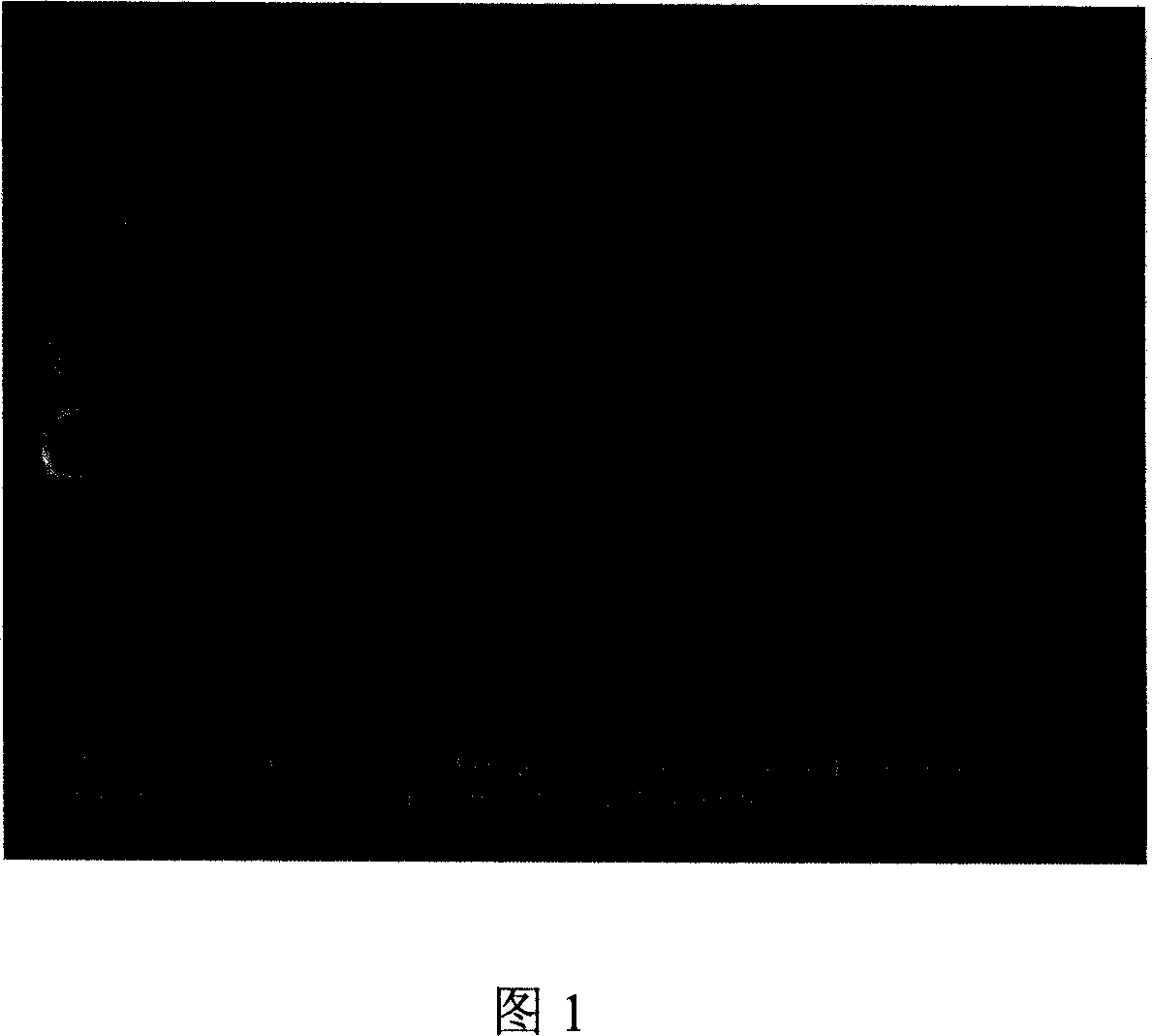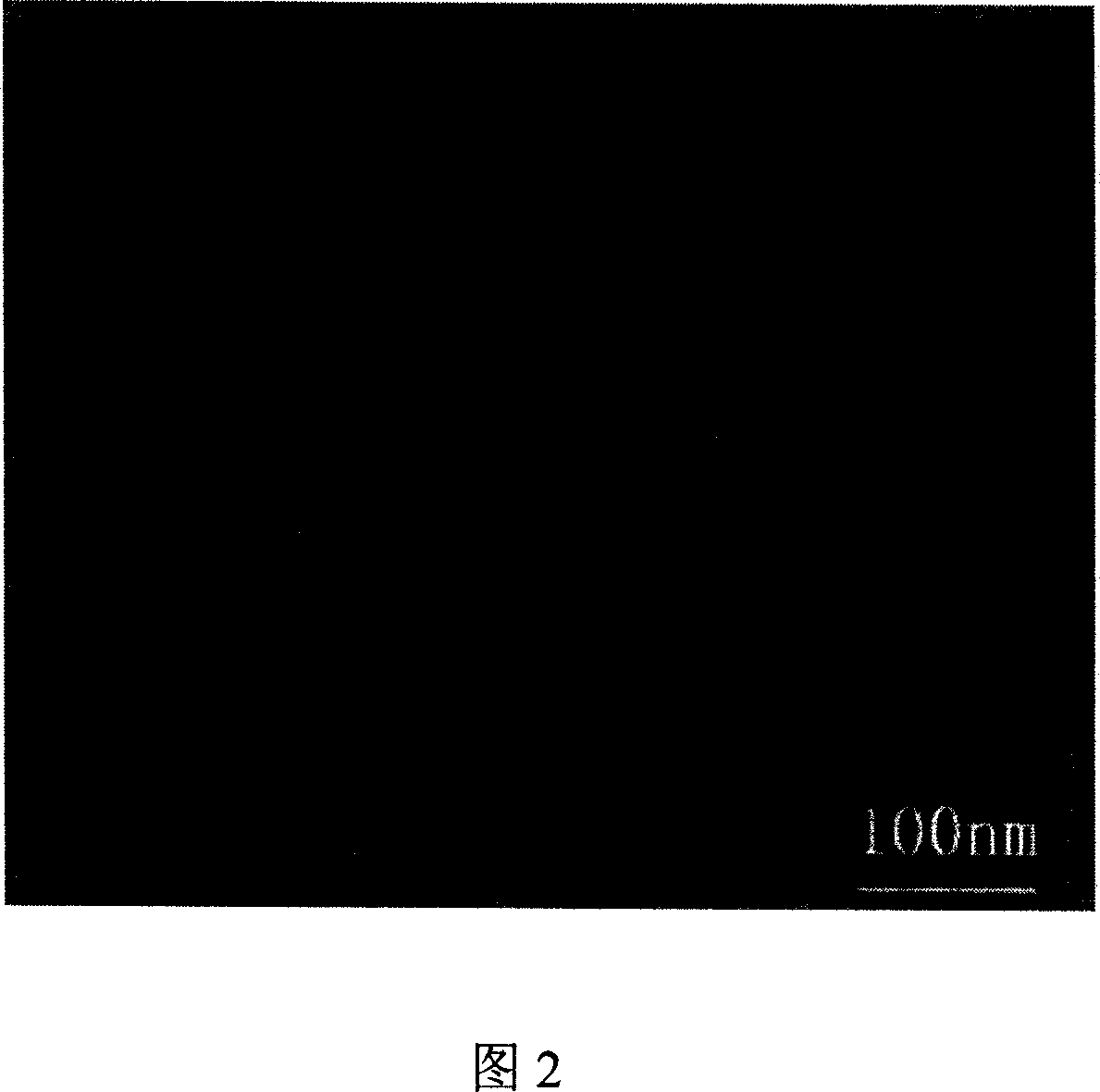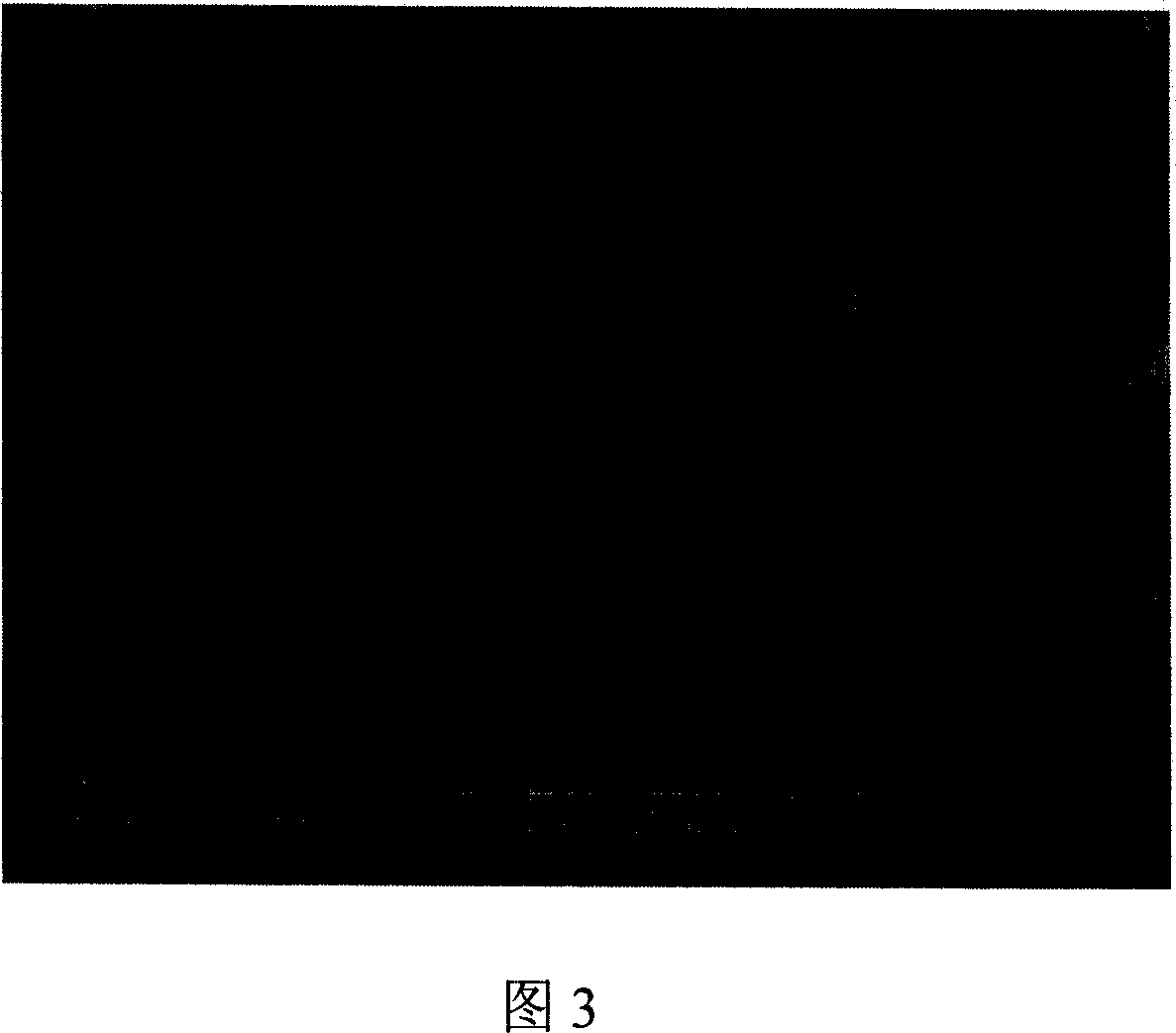Process of preparing nanometer hexagonal oxide sheet
A technology for hexagonal sheets and oxides, which is applied in the field of preparing oxide nano hexagonal sheets, can solve the problems of less research, lack of preparation methods and mechanisms, etc., and achieve the effect of simple preparation process
- Summary
- Abstract
- Description
- Claims
- Application Information
AI Technical Summary
Problems solved by technology
Method used
Image
Examples
Embodiment 1
[0017] Dissolve 6 mmol of ferric chloride in 40 ml of water, then add 0.6 mmol of citric acid, stir for 10 minutes, then add 30 ml of 2M sodium hydroxide, put the above prepared solution in an autoclave, and heat at 200 °C After treatment for 20 hours, the treated solution was centrifuged and dried to obtain nanometer hexagonal sheets of ferric oxide. Figure 1 and Figure 2 are scanning electron micrographs and transmission electron micrographs of ferric oxide nano-hexagonal sheets. It can be seen from the figure that the size of the nano-hexagonal sheet is 100 nanometers and the thickness is 20 nanometers.
Embodiment 2
[0019] 40 millimoles ferric chloride is dissolved in 40 milliliters of water, then add 40 millimoles of citric acid, after stirring for 10 minutes, add 2 milliliters of 2 moles / liter of potassium hydroxide again, put the above-mentioned prepared solution into the autoclave, Treat at 100° C. for 48 hours, centrifuge the treated solution, and dry to obtain nanometer hexagonal sheets of ferric oxide. The result was similar to Example 1.
Embodiment 3
[0021] Dissolve 2 millimoles of cobalt acetate in 80 milliliters of water, then add 0.2 millimoles of citric acid, stir for 10 minutes, then add 10 milliliters of 2 mol / liter sodium hydroxide, and put the above-mentioned prepared solution into an autoclave. Treat at 160° C. for 12 hours, centrifuge the treated solution, and dry to obtain nanometer hexagonal sheets of cobalt tetraoxide. Fig. 3 and Fig. 4 are scanning electron micrographs and transmission electron micrographs of nano-hexagonal sheets of cobalt trioxide.
PUM
| Property | Measurement | Unit |
|---|---|---|
| size | aaaaa | aaaaa |
| thickness | aaaaa | aaaaa |
Abstract
Description
Claims
Application Information
 Login to View More
Login to View More - R&D Engineer
- R&D Manager
- IP Professional
- Industry Leading Data Capabilities
- Powerful AI technology
- Patent DNA Extraction
Browse by: Latest US Patents, China's latest patents, Technical Efficacy Thesaurus, Application Domain, Technology Topic, Popular Technical Reports.
© 2024 PatSnap. All rights reserved.Legal|Privacy policy|Modern Slavery Act Transparency Statement|Sitemap|About US| Contact US: help@patsnap.com










